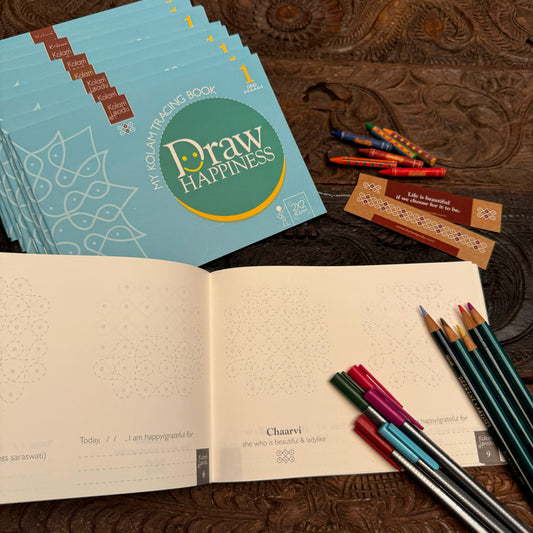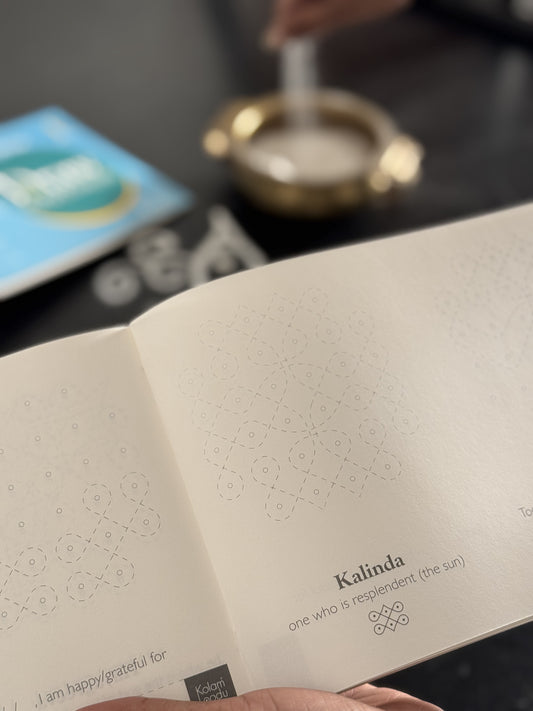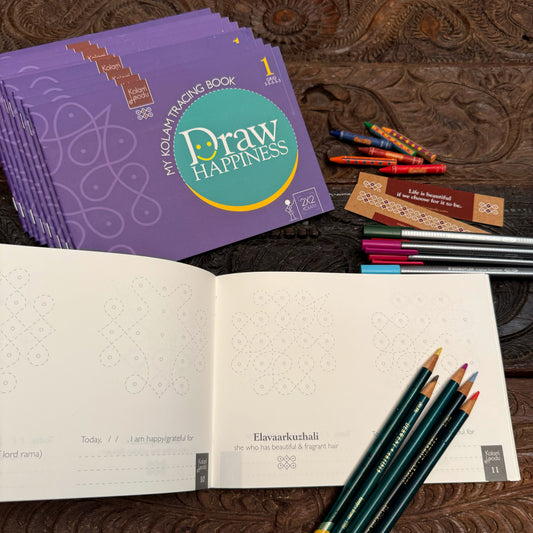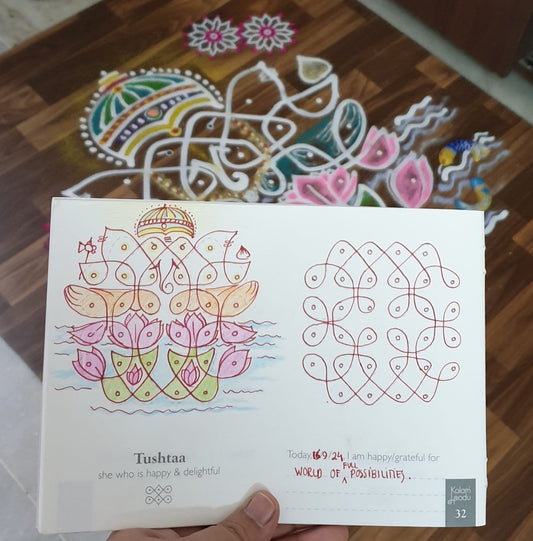Drawing kolam nurtures bodily kinesthetic intelligence, an aspect of Howard Gardner's multiple intelligences theory. This traditional art form hones fine motor skills, hand-eye coordination, spatial orientation, balance, and rhythm. It encourages experimentation, enhancing physical control, precision, and body awareness. Engaging in rhythmic movements fosters a sense of flow, promoting mindfulness and purposeful actions. Kolam serves as a canvas for creative expression and skill development, enriching bodily-kinesthetic intelligence through intricate and meaningful designs.
Bodily-kinesthetic intelligence is one of the multiple intelligences proposed by Howard Gardner in his theory of multiple intelligences. It refers to the ability to control and coordinate one's body movements effectively and use the body to solve problems, create, and express oneself. Individuals with high bodily-kinesthetic intelligence excel in activities that involve physical skills, such as sports, dance, crafting, and other hands-on activities.
Drawing kolam can enhance bodily-kinesthetic intelligence in the following ways:
- Fine Motor Skills: Creating kolams involves intricate hand movements, precision, and coordination. By connecting dots, drawing lines, and creating complex patterns, individuals develop and refine their fine motor skills, which are essential for various tasks that require dexterity and precision.
- Hand-Eye Coordination: Drawing kolams requires the coordination of hand movements with visual perception. This activity enhances hand-eye coordination, where individuals learn to control their hand movements based on what they see, leading to improved manual dexterity.
- Body Movement: In certain types of kolams, individuals use sweeping hand and arm movements to create large patterns on the ground. These movements engage the body and improve overall bodily-kinesthetic abilities.
- Spatial Orientation: Kolam creation involves understanding the spatial relationships between dots, lines, and shapes on the drawing surface. The ability to manipulate these elements accurately requires a strong sense of spatial orientation, which is a key component of bodily-kinesthetic intelligence.
- Balance and Rhythm: Some kolams, especially those drawn with rice flour or colored powders, involve a rhythmic tapping or pouring motion. This rhythmic action enhances individuals' sense of balance and rhythm, contributing to their bodily-kinesthetic capabilities.
- Experimentation and Creativity: Drawing kolams allows for creative expression, enabling individuals to experiment with different patterns, colors, and designs. This creative exploration nurtures bodily-kinesthetic intelligence by encouraging individuals to explore new ways of using their body to create artistic expressions.
- Physical Control and Precision: Creating intricate kolam designs requires physical control and precision. As individuals strive for accuracy in their drawings, they develop greater physical control over their movements, refining their bodily-kinesthetic intelligence.
- Body Awareness: Drawing kolams involves being aware of one's body positioning and movement in relation to the drawing surface. This heightened body awareness improves bodily-kinesthetic intelligence by developing a stronger connection between the body and its actions.
- Sense of Flow: Engaging in the rhythmic and flowing movements of drawing kolams can create a sense of flow and deep immersion in the activity. This immersive experience enhances bodily-kinesthetic intelligence by allowing individuals to engage in mindful and purposeful movements.
Through this traditional art form, individuals can refine their physical skills, improve their body awareness, and express their creativity through intricate and meaningful designs.
Kolam in Tamil Nadu is muggulu in Andhra Pradesh and Telangana, rangoli in Maharashtra, hase and rangavali in Karnataka, alopana in Bengal, to name a few.
Life is beautiful if we choose for it to be. Let’s draw happiness!







